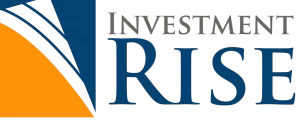My honest advice to someone who wants passive income through property
By: Niro Thambipillay
February 28, 2025
A big reason people want to invest in property is to build a passive income. Yet what I’m about to share with you today is going to be very different to what a lot of others on this platform talk about or perhaps what you’ve read elsewhere. You see, because building passive income through property in Australia is possible, but it’s not a direct route.
It’s a two-step process. An essentially, if you’re looking for the key philosophy here, the key philosophy to build a passive income through property is to focus on capital growth that leads to passive income. Now, if you’re not sure what I mean by that, then this episode is for you.
But first of all, if you’re new to me, Hi, I’m Niro. I’ve been investing now for 23 years in properties all around Australia. And over the last eight, now nearly nine years through my company investment rise, I’ve helped countless clients build wealth through property. And all of them have wanted some form of financial freedom or passive income.
So how do you then go about this process? Step one has nothing to do with where you buy or even what you buy initially. Step one is all about you. You see, when you’re looking to buy property in Australia right now, and if you’re looking in really good areas, you are essentially going to be somewhat negatively cash flowed to begin with.
Yes, interest rates are starting to drop. However, because they’ve risen so much, it’s more than likely that properties will continue to be negatively cash flowed, at least initially when you buy them. Now, I do know that you could potentially buy properties that are quite cheap in small country towns somewhere where maybe you might get a little bit of positive cash flow initially.
But you need to ask yourself, how sustainable is that cashflow? For example, if you say buy a property for $300,000 or $400,000 in a country town that has nothing more than maybe a couple of mines and a pub in that area, how sustainable is that cashflow going to be? What happens when those mines eventually close?
Well, you’re going to end up in a scenario where no one is going to be there to get your property rented virtually, which means that it’s going to be harder to get a tenant. And worse, you’re going to struggle to sell your property. I’ve seen this happen so many times over my investing careers, where the major newspapers or major property magazines splash on their covers so called property investing heroes, people who have gone out and bought lots and lots of properties, and they’re all positively cash flow and they’ve retired from their jobs, and they are living the Australian dream.
That very quickly changes to a nightmare, and there have been so many examples where just two years from when these property investing heroes are splashed on the front covers of magazines, they’re now in the news because they’re virtually bankrupt. The bank has repossessed all of their properties and is still coming after them for more.
Why? Because they’re buying properties that are not sustainable. Because remember if you’re trying to build passive income through property, what you’re really looking for is sustainable income for many, many years over the long term. Now, if you’ve gone and bought in a small town that’s focused on a couple of mines, or you’ve gone and bought in a small beach side location where the main industry is Tourism, again, a very fickle industry.
What happens when jobs in those industries dries up? No one’s going to be wanting to live in those areas and rental income will fall and your positive cash flow will turn into very quickly pretty significant negative cash flow. Or maybe you don’t go and buy in a small country town. Maybe you look for yield and you go and buy an apartment somewhere, right?
I’ve got so many clients who have Go on and try to do it on their own. They’ve bought apartments because someone said that yields from apartments are better, and you get better cash flow. And yet what they’ve found is that over time, the strata costs have literally burnt their way through their cash flow.
The property is now costing them money, or at best case they’re neutral, but there’s no passive income coming from them. And worse, there’s no equity growth in those properties, which means those properties are essentially duds because they are not stepping stones to build future wealth. They’re not giving the clients any passive income and they bought this property that now they’ve got to hold and hope that at some point they can sell to get their money back, right?
That’s not what you want. You want passive income coming from property that you can rely on, that you can bank on. Or something else people tell me is, Oh, but Niro, my friend bought this property in Perth for $400,000 and he was getting $500 a week in rent and it was positively cash flowed.
Okay, that’s fair and that it probably did happen. However, that was a very unique set of circumstances. The RBA interest rate was at 0.1%. The lowest it’s ever been and personally, I hope the lowest it will ever be again. We never want to see rates that low because that probably means that there is some massive economic calamity, hopefully not another pandemic, but something horrendous happening.
We don’t want that to be the case. So, we need to make sure that when we’re building wealth through property for financial security, financial freedom, and getting that passive income, we’re doing this in a manner whereby the properties that we’re buying, the areas that we’re buying in, they are robust and can handle the various ups and downs that we see in the economy over.
That’s why you can’t bank on doing say what your friend did back in 2021 or 2022, wherever they may have bought. That was a unique opportunity that probably will not present itself again. What I’m saying is build a plan that can stand the test of time. And that’s why you need to be focusing on good quality assets in good areas.
That’s why I say. Begin with you. So, step one is you need to look at your own surplus income. Are you spending less than you make? Now you might be putting extra money into your super or extra money into your mortgage or offset account, whatever, but there is extra money. every single month after you’ve taken care of your living expenses.
If you are finding that what you earn and what you spend are roughly the same or worse, you spend more than you earn that I would suggest that investing in property is too risky for you. I had someone recently reach out to me and saying that they were looking for extra cashflow and they wanted that from property.
And I said that, I couldn’t help them with that because I didn’t feel that was realistic, especially in Australia.
Step two, once you’re clear on how much surplus income you have each and every month, you need to go and buy properties in areas that have both strong capital growth potential, so that you expect them to rise in value over the years. And strong rental growth potential. So, you expect your income to improve over time.
Now, how do you do that? Well, if you want a full blueprint on how to find areas that meet these goals, what criteria they need to meet, then check out the link in the description below to get total for free the audio version and digital version of my book here.
But let me give you some key steps. Number one. Look to buy in areas where there’s more demand from owner occupier, so people who are buying to live versus the supply of available properties for sale. You want to see a gap between demand and supply, and how do you work that out? Well, you want to be looking at open homes.
How long is the queue of people to get into those properties? Is there strong interest? Are auction clearance rates starting to improve? Are properties selling now faster than they were, say, 12 months ago? Which indicates normally that there’s more buyers in that market than there were 12 months ago. And then look at the amount of supply that’s coming online in that market.
Has the government re zoned the area to do lots of high rises and increased density in that area? Well, that could be a potential issue. Is there lots of vacant land there that could be potentially rezoned and increase supply? That again could be an issue. Now, by themselves, it’s not necessarily a bad thing because I expect that multiple areas around Australia will see a slight increase in supply.
The key thing for you is that you want to avoid areas that are going to become oversupplied. So, make sure you’re tracking demand versus supply using just some of the criteria that I’ve outlined. But then from a rental perspective. You also want to be looking to see do these areas have more demand from tenants, people looking to rent properties than available properties for rent.
Again, you’re looking at demand being higher than supply. You want to be looking at areas where there is an undersupply of rental. properties in that particular market, potentially even a rental crisis, because that will then give you confidence that when you buy a property there, your property can get rented out very, very quickly, which will give you peace of mind.
Plus, when there’s more rental demand than rental supply, what will that mean for rents? Rents are likely to rise. And so, you’ll end up in a scenario where you’re buying a property that has strong capital growth potential and strong rental growth potential. And then look at what I call the magnetic element of an area.
What I mean by that is what is going to attract people to want to come and live in this area. So what infrastructure is happening in the area to improve jobs growth. Okay. For example, if there’s a new hospital being built in an area that is a very good piece of infrastructure because it’s going to attract doctors, nurses ect, to come and work in an area.
So what infrastructure is there to create jobs? What infrastructure is there to create connectivity and improve connectivity so people can get to work? So, for example, is there a new train line being built? to an area. We saw this in the northwest of Sydney when they built the train line out there. It totally transformed the area, created massive demand because people realized they could go and live out there and still get to the city at the time for work.
And that really drove prices higher. So, is infrastructure there helping connectivity? But finally, is infrastructure happening to improve liveability? So, what about things like schools? parks, shops, those sorts of things that owner occupiers and tenants will look for to want to live in an area. When you do these three things correctly, chances are you’ll have found an area that has strong capital growth potential, so prices are likely to rise, and strong rental growth potential, so rents are likely to rise improving your income.
From there, we move on to step three, which is rinse and repeat. So, what I mean specifically by that is look to buy your next investment property as soon as you’re able to, as soon as you’re comfortable doing so. Because look, buying a good quality investment property, yes, that’s great.
But one property in and of itself, is unlikely to take you to your financial goals and help you have the passive income and financial freedom and security that you’re looking for. You’ll need to build a bit of a portfolio here. So, look to buy a subsequent property and next property as soon as you can.
Now, you might be in a scenario where you have $4000 per month surplus income, just for argument’s sake here, and your first property costs you, say, $1,500 per month. Okay. Well, you can buy a second one pretty quickly and then potentially a third shortly after that on the flip side, you might be in a scenario where you have say $2,000 surplus per month and you’ve gone and bought one property that’s costing you say $1,500 per month from a cashflow perspective.
I’m talking about before tax here. Well, in that case, you’re going to have to it. To wait until the cash flow on that property goes from say negative $1,500 a month to maybe negative $800 per month, right? Whatever level it needs to get to so that then you have enough surplus again from a cash flow perspective to go and buy your second property and you apply the same philosophies you did on your first property.
Buy in an area with strong capital growth potential and strong rental growth potential. But the question here is though, how will all of this help you reach your passive income goals? How does capital growth? Lead to you achieving passive income. Well, let me give you just a hypothetical example here just to illustrate the scenario you would need to really get clear on what it looks like for your situation.
Okay, but let’s say over a period of time you bought say 4 properties at around $600,000 each, and then a few years later, each property was worth a million dollars each. So, each property now has gone up by about $400,000. At the same time, the rents have also gone up on all those properties, so they still might each be negatively cash flowed, but that negative cash flow has reduced over time.
So now you’re in a scenario where you’ve got so much equity, your negative cash flow has reduced, but still, you are negative. What do you do? Well, it comes down to your timeframes. If you have enough time to just wait. and let the properties in and of themselves become positive cashflow, then that’s great.
You would just wait, especially if you finished buying enough properties, or you feel that’s what you’re looking for in terms of how many properties you need to achieve your goals. Again, none of this is financial advice. You need to tailor this to your own personal situation. What I’m illustrating here is the concept.
Now, on the flip side, you might be like, look, we’ve owned these properties for say, seven years for example, and now we’re getting closer to retirement. What do we do? You would then potentially look at a structured sell down. So, what does that look like? Well, you might say sell one property, sell it at a profit, pay the capital gains tax, and then take whatever profit is left.
After tax, and then either pay down one other property or pay down a small section of each of the three properties, you would just need to look at the cash flow situation, but by actively reducing the debt on your existing properties, you are reducing your expenses, which means that you have a bigger gap of income from a rent perspective versus the expenses, which will improve your cash flow.
It is not a get rich quick scheme. This is not going to happen to you overnight, regardless of whatever else you see online. This is a process that you need to go through. But over time, if you follow this you could easily build up a passive income coming in through properties in locations that you can rely on to continue to perform for you. And that give you peace of mind so you can sleep at night knowing that you have successfully secured your financial future.
Want Niro’s help to find an investment property? Find out more here 👇
https://www.investmentrise.com.au/property-buyers-agent-service/
Financial disclaimer: I am not your financial advisor and the opinions I share in this video are purely my opinions. This is not to be considered personal advice as it is general in nature.



